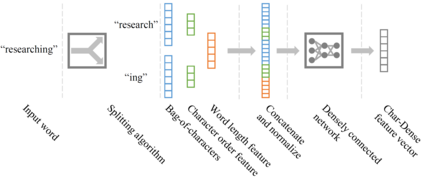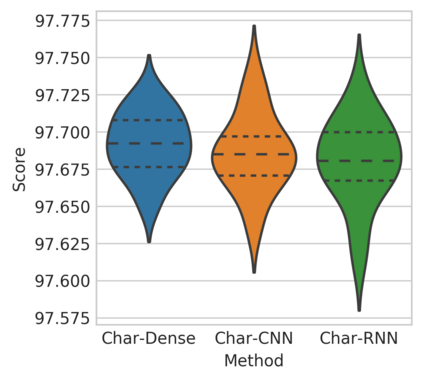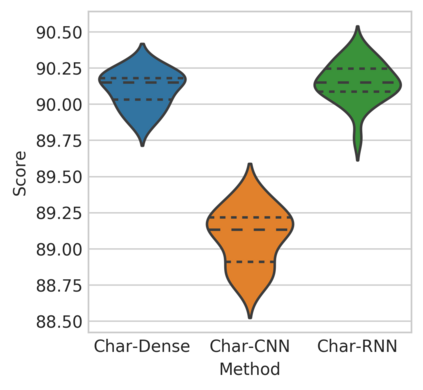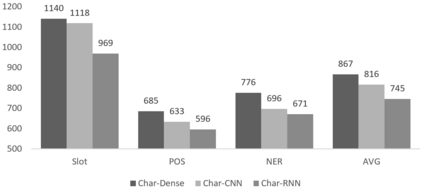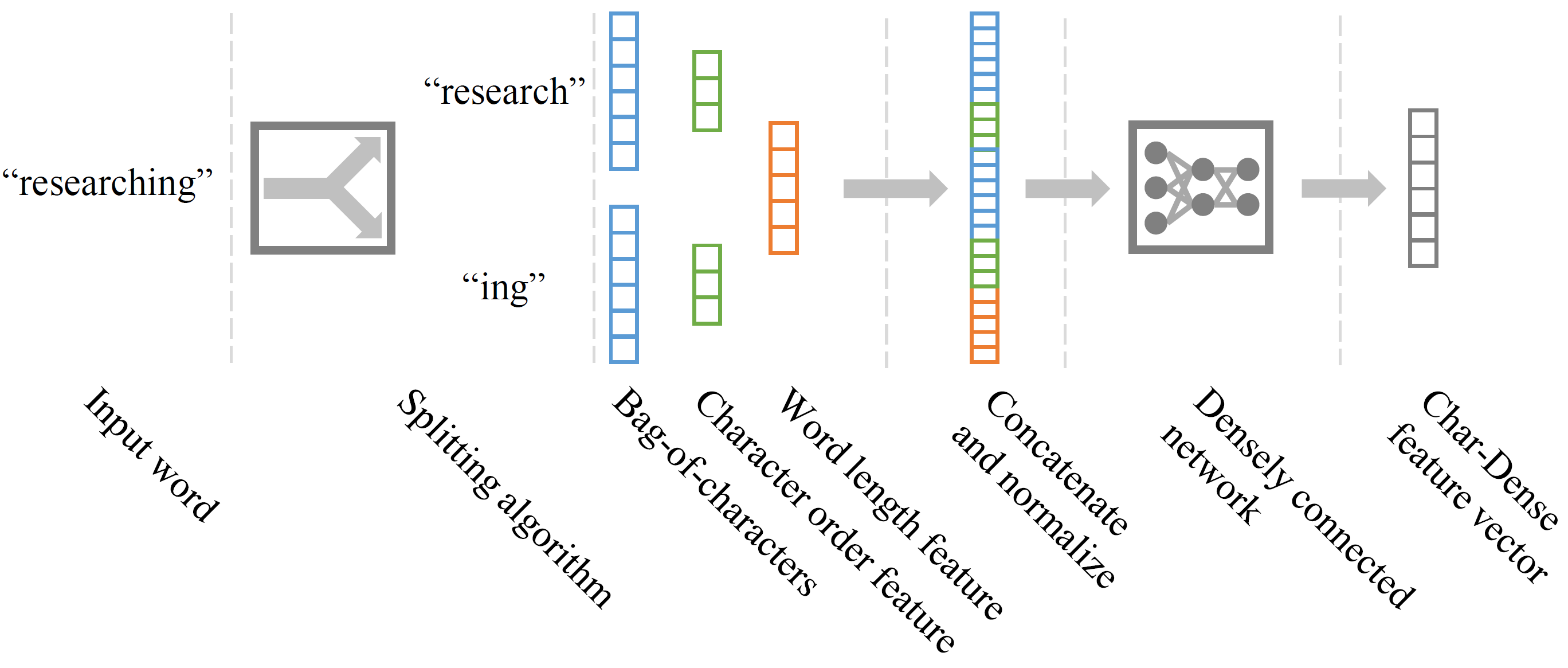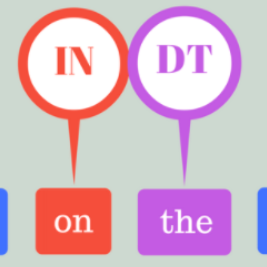Generating character-level features is an important step for achieving good results in various natural language processing tasks. To alleviate the need for human labor in generating hand-crafted features, methods that utilize neural architectures such as Convolutional Neural Network (CNN) or Recurrent Neural Network (RNN) to automatically extract such features have been proposed and have shown great results. However, CNN generates position-independent features, and RNN is slow since it needs to process the characters sequentially. In this paper, we propose a novel method of using a densely connected network to automatically extract character-level features. The proposed method does not require any language or task specific assumptions, and shows robustness and effectiveness while being faster than CNN- or RNN-based methods. Evaluating this method on three sequence labeling tasks - slot tagging, Part-of-Speech (POS) tagging, and Named-Entity Recognition (NER) - we obtain state-of-the-art performance with a 96.62 F1-score and 97.73% accuracy on slot tagging and POS tagging, respectively, and comparable performance to the state-of-the-art 91.13 F1-score on NER.
翻译:生成性格特征是在各个自然语言处理任务中取得良好结果的重要一步。 为了减轻人劳动在创造手工艺特征方面的需求,已经提出并显示出巨大的成果。 然而,CNN生成了位置独立特征,而RNN则缓慢,因为它需要按顺序处理字符。在本文中,我们提议了一种新颖的方法,即使用密集连接的网络自动提取字符级别特征。拟议方法不需要任何语言或任务特定假设,在使用神经神经神经网络或神经网络等神经结构自动提取这些特征时,使用神经结构的方法,如Cultural Neal Neam Network(CNN)或Center NealNet(RNNN)等自动提取这些特征的方法已经提出并显示出了巨大的活力和有效性,同时比CNNNN(CNN)或RNN(R)所用方法更快。在三个顺序标签任务上评价了这种方法:位置标记、部分语音标记(POS)标记和命名-Enited-Enticle 识别(NER)-我们获得了最新的性能表现,分别是96.62F1和97.73%。

